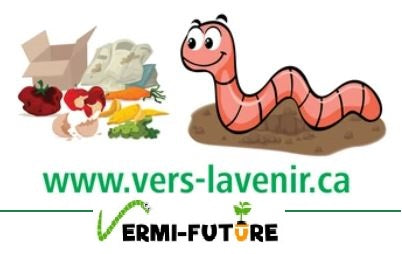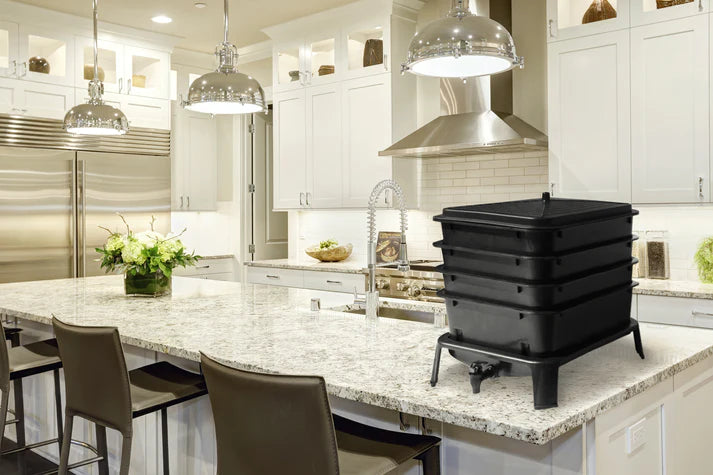Worm composting is an eco-friendly, efficient way to reduce household waste and produce nutrient-rich compost for your garden. However, to get the most out of your worm composter, it's crucial to optimize its performance. Here are five key tips to ensure your worm composter is operating at its best.
- Start with the Right Setup
The first step to a successful worm composting experience is to choose a suitable composter. Whether you're a beginner or a seasoned green thumb, selecting the right model is crucial. For those looking to invest in a high-quality, easy-to-use composter, the Vermi-Future Worm Condo offers a perfect balance of size and functionality. It's designed to provide an ideal environment for worms to thrive and compost effectively.
- Balance Your Worm Diet
Feeding your worms the right balance of greens (nitrogen-rich materials like fruit and vegetable scraps) and browns (carbon-rich materials like dried leaves, paper, or cardboard) is essential. An imbalance can lead to odors or a slowdown in composting. A good rule of thumb is to use a 50:50 ratio of greens to browns. This balance keeps your worm composter healthy and productive.
- Maintain Optimal Moisture Levels
Worms need a moist environment to live and work efficiently. However, too much moisture can create anaerobic conditions, leading to odors and poor compost quality. Aim for the moisture content of a wrung-out sponge. If your bin is too dry, add water or moist food scraps. If it's too wet, add more brown materials to absorb the excess moisture.
- Monitor Temperature and pH Levels
Worms are sensitive to extreme temperatures and pH levels. They prefer temperatures between 55-77°F (13-25°C). If your bin is outdoors, protect it from extreme weather conditions. Regarding pH, worms thrive in neutral to slightly acidic environments. Avoid adding too much acidic material (like citrus peels) and sprinkle a handful of garden lime every few weeks to maintain a neutral pH.
- Regularly Harvest the Compost
Regularly harvesting worm castings ensures your worm composter doesn’t become overcrowded and that it continues to run efficiently. Most worm composters will be ready for harvest every 3-6 months. The Vermi-Future Worm Condo makes this process easy with its tray system. Once the bottom tray is full and mostly castings, you can remove it, use the compost, and then replace it on top to continue the cycle.
Conclusion: Enjoy the Rewards
By following these five tips, you’ll ensure that your worm composter is not just a bin but a thriving ecosystem. It’s a simple and satisfying way to contribute to a healthier planet, reduce waste, and create a fantastic product for your garden.
Remember, each worm composter is unique, and it might take some time to find the perfect balance. But with a little patience and attention, you'll be on your way to becoming a vermicomposting pro. For more tips and information on worm composting, be sure to explore our website. Happy composting!
